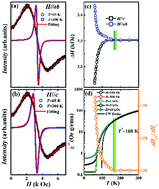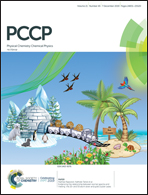Possible magnetic correlation above the ferromagnetic phase transition temperature in Cr2Ge2Te6
Abstract
Cr2Ge2Te6 has recently emerged as a new two-dimensional ferromagnetic semiconductor (2DFMS) that is promising for spintronic applications. The origin of the ferromagnetism is a debatable point. In this study, ac/dc susceptibility and electronic spin resonance (ESR) measurements are performed to explore the origin of the ferromagnetism in Cr2Ge2Te6. Through the ac susceptibility scaling, the critical temperature TC = 62.84 K and δ = 5.24 from the critical isotherm, γ + β = 1.78 from the temperature dependence of the crossover line and γ = 1.43 from the temperature dependence of the susceptibility along the same line. Unlike Cr2Si2Te6 whose magnetism can be well described by the 2D-Ising model, Cr2Ge2Te6 cannot be simply described by a single theory model. Meanwhile, the origin of the abnormal critical behavior has been explored and it may be related to the presence of the possible magnetic correlation around the high temperature T* ∼ 160 K, which is confirmed by different probing measurements. The magnetic correlation at high temperature accompanied by the strong magnetic-crystalline anisotropy at low temperature plays an important role in the origin of the abnormal ferromagnetism in Cr2Ge2Te6. Our results may supply a typical reference to investigate the abnormal ferromagnetism of 2DFMSs.



 Please wait while we load your content...
Please wait while we load your content...